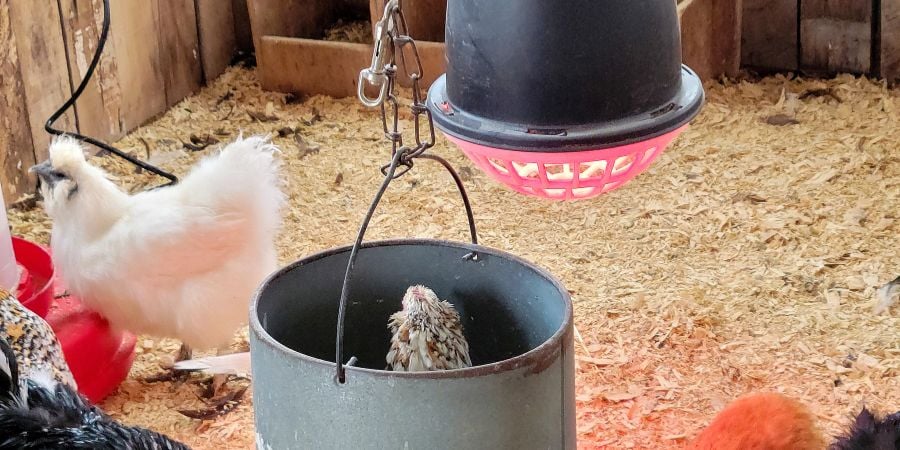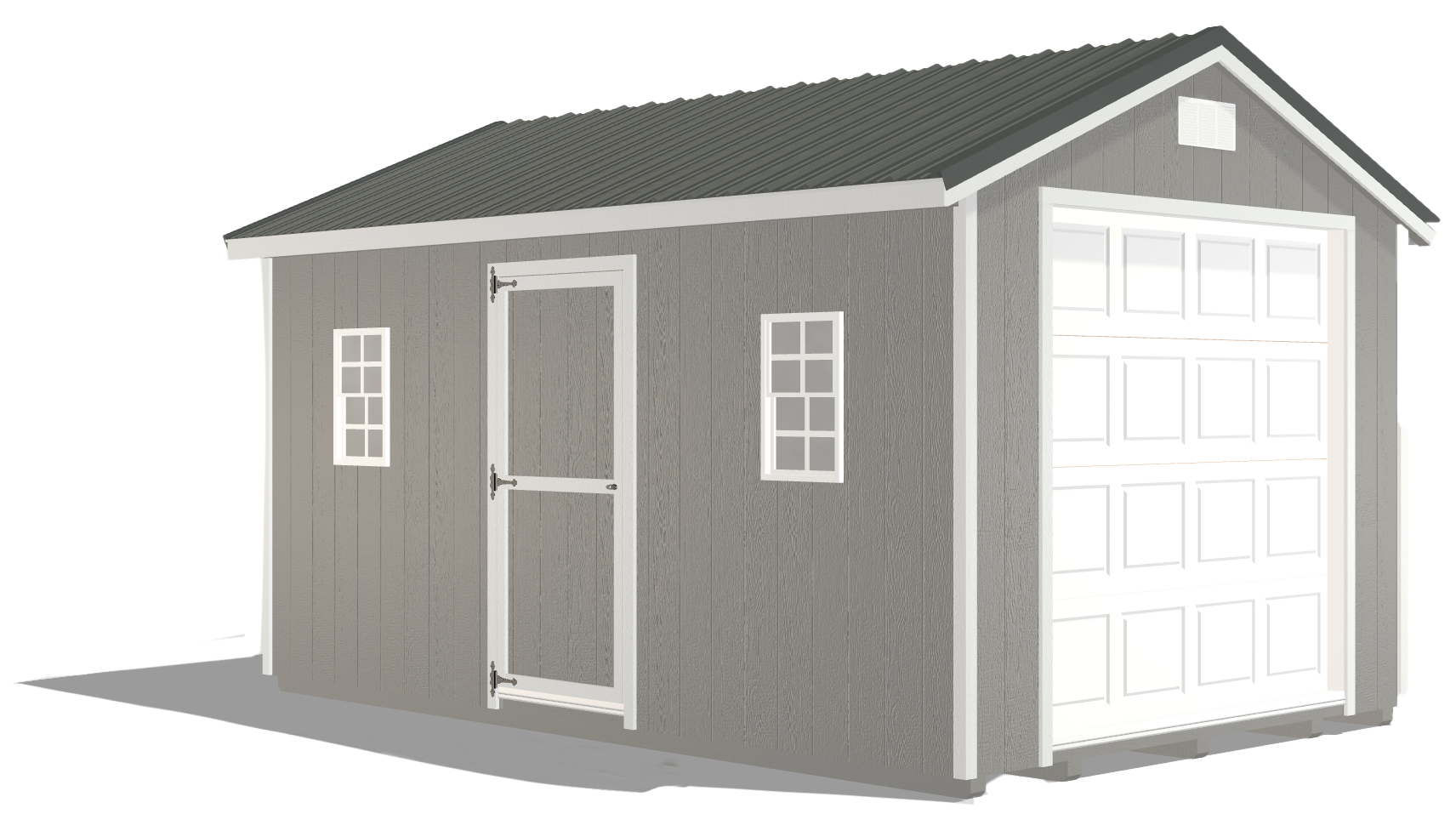How to Heat a Chicken Coop: Top Tips for Warm Coops
by Dakota Storage Buildings, on July 08, 2024

During colder months, backyard chicken keepers face the challenge of maintaining the coop’s warmth. Without proper heating techniques, coops can become dangerously cold, leading to reduced egg production and greater susceptibility to diseases among the chickens. Extended exposure to cold can also cause stress that negatively affects the chickens' overall behavior and feeding patterns. We want to provide strategies to heat a chicken coop and ensure the well-being of your flock and maintain a profitable poultry operation during the colder months. Strategizing chicken coop designs for cold weather now will help ensure the comfort and health of your chickens during winter.
How Proper Heating Enhances Chicken Health and Egg Production
Chickens are tough birds, but they are not immune to the effects of cold weather. When temperatures drop, chickens can suffer from stress, which in turn affects their immune system, making them more susceptible to diseases. This stress, caused by the cold, also leads to reduced egg production, as chickens conserve energy to maintain body heat instead of producing eggs.
How Cold Stress Affects Your Chickens' Health
Exposure to cold stress can lead to a range of serious health issues in chickens, including frostbite on their combs and wattles, and in severe cases, hypothermia, which can be fatal if not addressed immediately. Chickens tend to consume more feed in cold conditions; however, the energy derived from the feed is primarily used to maintain body heat rather than for growth or egg production. This increased feed consumption without corresponding productivity can significantly raise the costs of chicken keeping during winter months.
Maintaining Chicken Productivity and Health in Winter
Providing a warm environment for your chickens helps ease these challenges, ensuring their health and boosting their egg-laying capabilities even during colder periods. Well-heated chicken coop designs not only help prevent the physical discomfort and health risks associated with cold stress but also promote regular egg production. Maintaining an active and engaged flock during the winter can prevent behavioral issues that can result from extended periods of confinement and inactivity. Ensuring your chickens have a comfortable coop during the winter allows them to continue performing natural behaviors, which is essential for their psychological well-being.
Selecting the Best Heating Method for Your Chicken Coop

As a poultry farmer, selecting the appropriate heating solution for your chicken coop is crucial, especially during the colder months. There are several methods available, each designed to cater to specific needs and coops. Understanding the benefits and limitations of each option will help you make an informed decision that ensures the comfort and safety of your chickens.
Types of Heating Solutions for Chicken Coops
The most commonly used sources to heat a coop include heat lamps, radiant heaters, and heated pads.
Heat Lamps: Heat lamps are favored for their ability to warm large areas and are relatively inexpensive. However, they must be used cautiously as they can pose a fire hazard if not installed correctly.
Radiant Heaters: A radiant chicken heater for coops offers a safer alternative, emitting heat that directly warms objects and birds in the coop without heating the air, making them efficient and reducing the risk of fire.
Heated Pads: Heated pads are great for providing warmth to a confined area and can be placed in nesting boxes to keep the birds comfortable while they lay and roost.
Factors to Consider When Selecting a Heating Method
When heating a chicken coop, safety should always be your top priority. It is essential to select a system that minimizes the risk of fire, particularly in a wooden structure filled with flammable materials like straw or wood shavings. Energy efficiency is something else to consider. Opt for heaters with thermostats or timers to control usage and reduce unnecessary energy costs. Additionally, consider the ease of installation and maintenance, as well as the initial cost versus long-term savings. By carefully weighing these factors, you can choose a heating method that not only keeps your chickens warm but also aligns with your overall farm management practices and budget constraints.
Tips for Keeping Your Chicken Coop Warm
Ensuring you heat a chicken coop throughout the winter promotes the well-being of your chickens and ensures their productivity during the colder months. To effectively maintain a warm and comfortable environment inside your coop, consider implementing these practical tips.
![]()
Regularly Check Heating Systems: Inspect heaters, heat lamps, or other heating devices to ensure they function properly and efficiently. Check for any wear and tear or potential hazards.
![]()
Monitor Temperature Consistently: Use a reliable thermometer to keep track of the temperature within the coop. Strive to maintain a stable temperature that is comfortable for your chickens but not excessively warm.
![]()
Seal Drafts: Identify and seal any cracks or gaps in chicken coop designs where cold air might enter. This can be done using weather stripping or caulking to help maintain the internal temperature.
![]()
Maintain a Routine: Establish and follow a regular maintenance routine for your heated chicken coop during colder months. This includes checking insulation, heating elements, and ventilation regularly.
Properly Insulate and Ventilate Your Chicken Coop
Effective insulation is crucial for maintaining a stable temperature within your chicken coop, especially during the cold winter months. Insulating walls and ceilings not only helps retain heat but also reduces the amount of energy needed to keep the coop warm, making your heating methods more efficient.
However, while insulation helps keep the coop warm, it must be paired with adequate ventilation to ensure a healthy environment. Proper ventilation systems help prevent the buildup of ammonia from chicken waste and reduce moisture levels that can lead to dampness and condensation. These issues, if not managed, can contribute to respiratory problems and other health issues in chickens. Strategically placing vents at the top and lower areas of the coop ensures that fresh air circulates properly, displacing stale air and moisture without causing drafts that could chill the chickens.
Monitor and Adjust Temperatures
To maintain the optimal temperature within the coop, regular monitoring is essential. Using a reliable thermometer can help you keep track of the internal conditions, ensuring that the temperature remains within a safe and comfortable range for your chickens. It is important to adjust your heating approach based on the external weather conditions. For example, extra heating may be necessary during a particularly cold day, while milder days might require less heat.
Implementing a thermostat can allow you to easily automate temperature adjustments, maintaining the desired warmth without constant manual intervention. This helps provide a consistent environment for your chickens and helps conserve energy by ensuring that a chicken heater for coops are not operating unnecessarily. Periodic recalibration of thermometers and thermostats is also recommended to ensure their accuracy and functionality.
Ensuring Chicken Comfort Through the Winter Months

Maintaining a chicken coop during the winter can be challenging, but with a few creative chicken coop designs strategies, you can keep your chickens warm and comfortable even in the coldest months.
Create a Self-Heating Coop With Deep Litter
One effective method is the deep litter method, which involves allowing bedding material and chicken manure to accumulate and decompose over the winter. This process naturally generates heat and provides significant insulation within the coop. As the organic matter breaks down, it releases heat, keeping the floor warm and reducing the need for additional heating sources. This method helps maintain a warm environment and creates rich compost that can be used in your gardens in the spring.
Warm Bedding and Nutritious Treats
Ensuring that your chickens have warm, dry bedding is crucial during the winter. Materials like straw or wood shavings are excellent for insulation and can be layered thickly to create a cozy environment for your chickens to roost. Regularly changing the bedding will help keep it dry and maintain its insulative properties.
Providing warm treats for your chickens can greatly enhance their well-being during colder weather. Simple treats like warm oatmeal, cooked pumpkin, or corn can be given as a warm meal that helps raise their body temperature. These treats not only serve as a source of warmth but also provide necessary nutrients that can boost their energy levels and help them stay active. Offering these kinds of treats can also be a great way to interact with your chickens and enhance their social well-being.
Strategies to Ensure Safe and Efficient Heated Chicken Coops

Maintaining a warm and safe environment for your chickens during the colder months requires careful consideration of both safety and efficiency. Employing safe heating practices is crucial to avoid potential fire hazards, which can be devastating in structures like chicken coops. Implementing energy-saving practices is equally important. This not only minimizes costs but also ensures sustainable operation, reducing the environmental impact of your heating solutions.
Preventing Fire Risks
To safeguard your heated chicken coop against fire risks, it is critical to maintain a safe distance between heating elements and any flammable materials. This includes bedding, feed, and wooden structures of the coop itself. Regular inspections of the heating systems and electrical installations are essential to detect and rectify any faults that could lead to overheating or sparks. Installing smoke detectors in or near the coop can provide early warnings, enabling quick action to prevent a fire. Using heating equipment that comes with automatic shut-off features or guards can further enhance safety by reducing the risk of these devices coming into direct contact with flammable materials.
Energy-Efficient Heating
To reduce the energy consumption associated with heating a chicken coop, consider using thermostats that regulate the temperature automatically. These devices ensure that the heater operates only when necessary, maintaining a steady temperature without wasting energy. Timers are another great tool that can be used to control heating periods, allowing the heaters to run during the coldest parts of the day or night and turning off when not needed. Optimizing the insulation of your coop can play a pivotal role in energy conservation. Proper insulation keeps the chicken coop heat from escaping, reducing the amount of energy needed to maintain a comfortable temperature inside the coop. By implementing these energy-saving practices, you can significantly lower your heating bills and contribute to a more environmentally friendly homestead.
Master Winter Chicken Care for a Healthier, More Productive Flock
Knowing how to heat a chicken coop effectively is crucial for the health and productivity of your flock during the cold months. By following the guidelines you can create a safe, warm, and comfortable environment for your chickens. Proper heating methods can prevent the spread of illness and enhance overall flock welfare, which is key to maintaining high productivity. For more detailed information and additional tips on starting with backyard chickens, download our free "Beginners Guide To Getting Backyard Chickens" and set the foundation for a thriving and productive flock. This guide is packed with essential insights and expert advice to help you get started on the right foot and ensure your poultry setup is optimized for success.

























